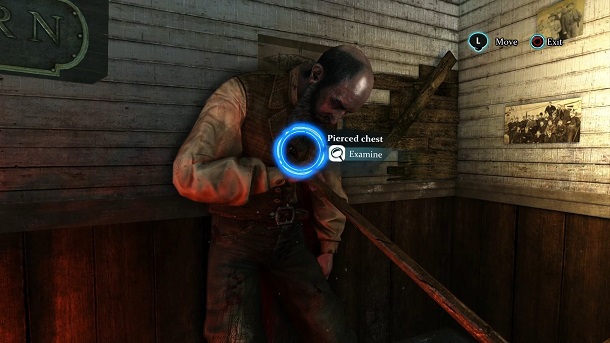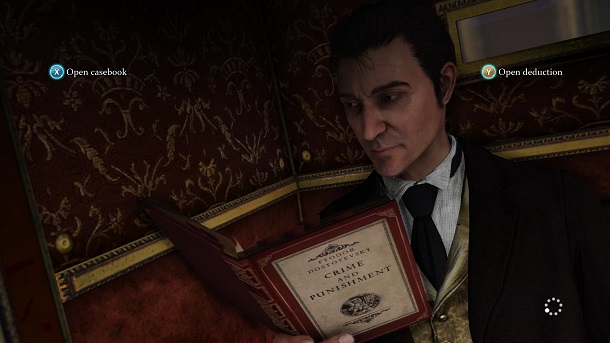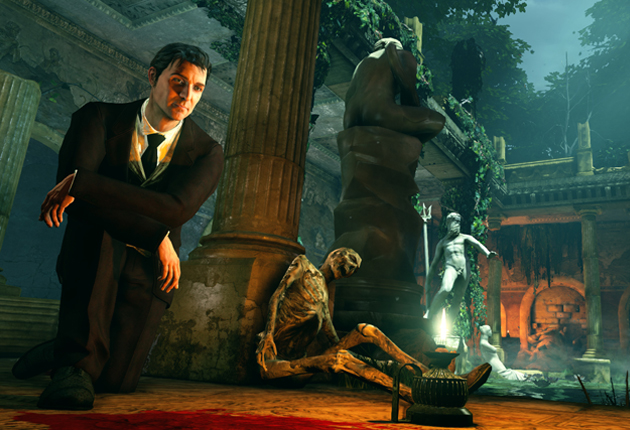The Sherlock Holmes fiction has gone through an intense renaissance in recent years. Between the ever-so-popular modern BBC rendition starring Martin Freeman and Benedict Cumberbatch, the American films starring Robert Downey Jr. and the CBS series Elementary, you’d be hard pressed to find someone who doesn’t have at least one recent point of reference for the character now, so Sherlock Holmes video games come with that territory.
Sherlock Holmes: Crimes and Punishments is the most recent in the line of third-person adventure games featuring the famous detective from developer Frogwares, and once again introduces a new set of original stories and mysteries to investigate and solve, and to the game’s credit, the writing is exceptionally well done, and the new stories were the driving force that kept me going despite the games obnoxiously clunky controls.
Frogwares have shown time and time again that it understands the character and mythos of Sherlock Holmes, so all of the games six cases feel like a perfect fit for the character and universe. I often found myself searching for something story-related online to get some sort of background on a scenario, only to be instantly reminded that these are new for Crimes and Punishments, and that I would just have to ride the wave to get to the end.
In general, the tone and setting feel darker and grittier than that of The Testament of Sherlock Holmes, which isn’t necessarily a bad thing. The shift goes hand-in-hand with Holmes’ characterization as an amalgam of that of the original Sir Arthur Conan Doyle stories and the more modern takes on the character, putting way more emphasis on his moral ambiguity than before.
This choice of characterization plays into the game’s narrative, as the title, Crimes and Punishments, refers to the numerous options you have when determining the cases outcomes. When working a case, you’re not only taking the clues into account, but also the suspects motivations and mental states, which can factor into your final decision of turning them in to the authorities, or letting them off the hook, sweeping it under the rug and pointing Inspector Lestrade and his men in another direction.
Upon conclusion of a case, you can then compare the choices made to other players, similar to what Telltale Games does at the end of their episodic adventure games.
Unlike those other games, however, Crimes and Punishments suffers from a major problem evident in adventure games in that there is often a clear lack of direction.
In one specific instance, Holmes and Watson needed to search London’s Kew Gardens for clues before they were able to move on to the base of operations for an ominous syndicate. The initial investigation was interesting, having you uncover various clues and learning character motivations via dialogue trees and unearthed documents.
At a point, I, as the player, I knew exactly what was going on and where I needed to go, but the game required me find every last clue, so I scoured the environments looking for clues again to no avail.
By my fifth search of Kew Gardens I had resorted to the same tactics I had used to get through SCUMM engine adventure games, and was just walking back and forth, spinning in all directions, triggering Sherlock’s Sixth Sense (a special mode that highlights clues that the naked eye may miss) on and off in case I missed something, all the while mashing the A button waiting for the moment when I’d inadvertently click on the last clue.
Still nothing.
Eventually I walked away. When I sat back down to play I accidentally pulled up the game’s inventory, where it informed me that I needed to go back to 221B Baker Street and experiment on a specific item at Sherlock’s examination table. None of this was communicated to me in-game.
Clear lack of direction aside, my other main complaint comes concerning load times, which regularly took over 30 seconds on a fairly beefy PC. This was especially offensive when the game requires you to bounce between different locations in pretty quick succession at key points in a case. Nothing killed my interest more than getting to a really interesting point in the story and having to wait through some 45+ second loading screens between scenery changes.
With that out of the way, it should be noted that it really is a very nice looking game, even by today’s standards. The care and detail put into the visuals of the game become immediately evident in the facial animations and character portraits. I really wish that level of care was given to other aspects of the game, the puzzles specifically.
When I was about 30 seconds into my first puzzle, I thought it a bit odd and off-putting that the game offered to let me tap a button to skip what I was doing and continue on with the story. It wasn’t until I had more puzzles under my belt that I realized that they are, for the most part, incredibly tedious and just plain boring.
The chemistry puzzles were especially egregious, taking several seconds for the scripted motions of every vial to play out after selection, and then having to go through it all again if you had done something incorrectly.
I feel as if Crimes and Punishments is trapped in limbo where it can’t decide if it would rather be a free-roaming adventure game like L.A. Noire or go more the way of the Professor Layton games and focus on interesting puzzles, and as a result, the gameplay suffers.
The stories really are great, though, and I liked that aspect enough to spend 12 hours seeing each through to the end over the game’s six cases, and it is definitely worth checking out for the stories it tells. I just wish the part where you actually play the game was more fun.
This review is based on Steam code sent to SideQuesting by the publisher



No Comments